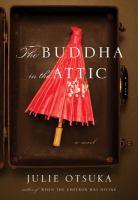
The Buddha in the Attic is a short novel depicting the lives and struggles of Japanese mail-order brides arriving in America in the years leading up to World War II. It is not one central story that follows a single character--or even a few. Instead, the author uses the first person plural narrative style (through the use of "we" and "our") to tell the stories of countless, mostly nameless women. The narrative begins on the boats, as the young girls share their dreams for the unknown future, and continues with their lives in America as they struggle to adapt to a new land and a new language, watch their children grow and turn away from the traditions that sustained their parents, and experience the eventual devastation of war and imprisonment in internment camps.
Otsuka’s novel is both powerful and ambitious. America’s imprisonment of thousands of innocent Japanese during World War II is one of the darkest stains on its history, and attempting to tell the story of all of the women involved in one novel was a huge challenge. Unfortunately, while the topic was handled tactfully and showed evidence of careful research, the style really did not work for me. The use of the impersonal narrative style--the decision to group all Japanese women into a singular, faceless group--had a dehumanizing effect. Without names and specific lives and thoughts to follow, they didn't feel real. This felt like a great loss, as the subject matter was so inherently compelling and important. The Buddha in the Attic is a quick and easy read about a topic that is vastly underrepresented in recent history, but I would recommend a more straight-forward biography or history book if you want to learn more about this time period.
